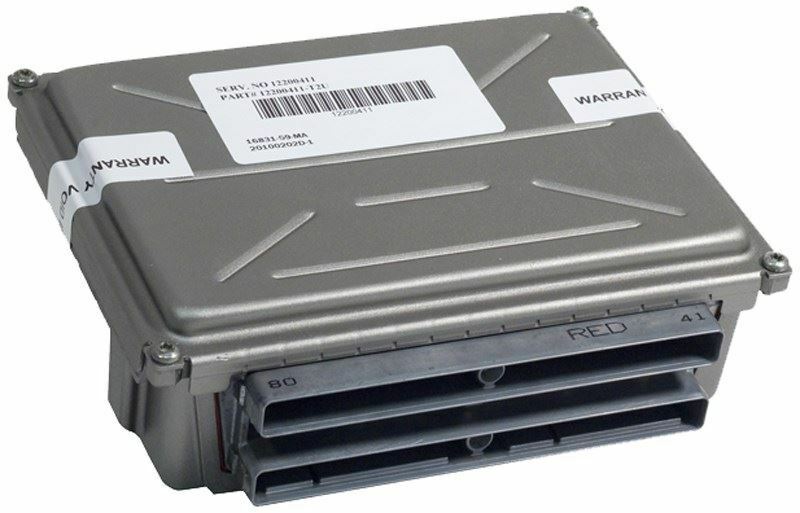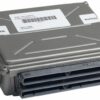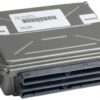Is Your 1998 Chevrolet Venture Running Rough?
If your 1998 Chevrolet Venture is suffering from erratic engine behavior, poor fuel economy, shifting problems, or a persistent Check Engine Light, a failing Powertrain Control Module (PCM) is often the culprit. As the central computer for your vehicle, the PCM is responsible for managing everything from fuel injection and spark timing to transmission shift points and emissions controls. When it begins to fail, it can cause a cascade of frustrating and difficult-to-diagnose issues. This isn’t just a replacement part; it’s a direct solution to restore your vehicle’s factory performance and reliability.
From the Diagnostic Bay
We had a 1998 Venture come into the shop that had its owner completely stumped. He had replaced the spark plugs, wires, and even a couple of sensors trying to chase down a rough idle and stalling problem. The codes were intermittent and pointed in different directions. After hooking up our professional scanner and monitoring live data, we noticed the fuel trim and ignition timing values were jumping all over the place with no logical reason. This pointed directly to a faulty processor in the PCM. We installed one of our pre-programmed modules, performed a quick security relearn, and the van ran like it just rolled off the assembly line. It’s a classic case where throwing parts at a problem costs more time and money than correctly identifying the root cause: the vehicle’s brain.
Common Symptoms of a Failing 1998 Venture PCM
- ✔ Unexplained Check Engine Light illumination
- ✔ Rough or inconsistent engine idle
- ✔ Vehicle stalling or cutting out while driving
- ✔ Harsh or erratic automatic transmission shifting
- ✔ A noticeable decrease in fuel efficiency
- ✔ Engine hesitation or misfires
- ✔ Complete no-start condition where the engine cranks but won’t fire
- ✔ Failure to pass state emissions testing
A Plug-and-Play Solution Programmed for Your Van
Don’t settle for a generic, unprogrammed module that will require an expensive trip to the dealership for flashing. We take the guesswork and extra cost out of the equation. When you purchase this 1998 Venture PCM, you provide us with your vehicle’s 17-digit Vehicle Identification Number (VIN). Our technicians will then use that VIN to flash the module with the latest, most up-to-date GM factory software specific to your vehicle’s configuration. This ensures perfect compatibility and optimal performance right out of the box.
This module, service number 9357440, is a direct-fit replacement for a wide range of GM vehicles from the late 90s, including models like the Grand Am, Century, Lumina, and more. It is fully compatible with original service numbers 09356741, 16236757, 9356741, 9357034, 9357440, and 9366314. Installation is straightforward for any competent DIY mechanic or professional technician. In most cases, a simple security relearn procedure is all that’s needed to get your vehicle back on the road.
Frequently Asked Questions
Do I need to get this PCM programmed?
No. This module comes fully pre-programmed to your vehicle’s specific VIN before we ship it. Simply provide your VIN during or after checkout, and we handle the complex programming for you.
What is a ‘security relearn’ and is it difficult?
A security relearn, also known as a Passlock or VATS relearn, syncs the new PCM with your vehicle’s anti-theft system. It’s a simple procedure you can do yourself with just the ignition key. It typically involves turning the key to the ‘ON’ position for 10-15 minutes, then ‘OFF’, and repeating the cycle two more times. Instructions are readily available online for your specific model.
Will this fix my check engine light?
If the check engine light is caused by a faulty PCM, then yes, this part will resolve the issue. However, it’s crucial to ensure the codes stored in the old module have been properly diagnosed. This PCM will not fix problems caused by other faulty components like sensors or wiring.
Where is the PCM located on a 1998 Chevy Venture?
On the 1998 Venture, the Powertrain Control Module is typically located in the engine compartment, often inside the air filter housing assembly for protection and cooling.
Is this a new or used part?
This is a high-quality, tested, and verified genuine OEM component that has been expertly programmed to function as a reliable replacement for your original failed unit.


